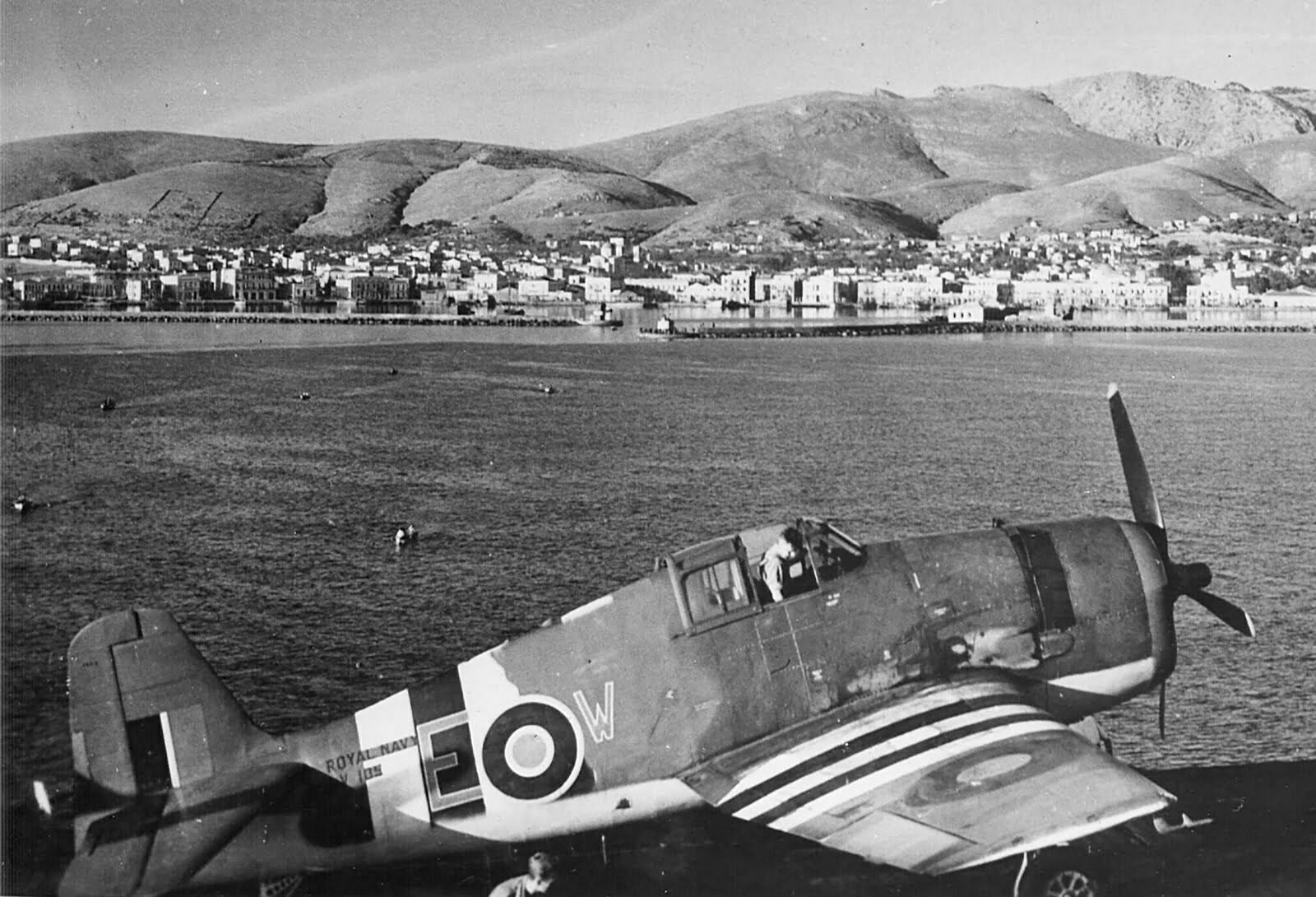Grumman Hellcats of 800 Naval Air Squadron
In July 1943, 800 was the first FAA squadron to equip with the Hellcat. Joining No. 7 Naval Fighter Wing the squadron provided escort for April 1944 attacks against the German battleship Tirpitz from HMS Emperor.
Successful attack in Operation Tungsten of 3 April 1944 on the Tirpitz in Kaa Fjord, North Norway by 827 and 830 squadron Barracuda dive-bombers from HMS Furious and HMS Victorious and supported by the 7th Naval Fighter Wing including 800, 804, 881, 896, 882, and 898 fighter sqn
Royal Navy Hellcat I’s (F6F-3) from 800 squadron were involved in escorting Barracuda attacks on the German battleship Tirpitz from April to August 1944 in Alta Fjord, Norway. One of these operations, on 8 May 1944, the Luftwaffe fighters flew up to protect the battleship. Some of the 800 squadron Hellcats from HMS Emperor went to attack the German aircraft and shot down one Fw 190 and two Bf-109G fighters. The Hellcats suffered one loss to the Luftwaffe and another to anti-aircraft fire. Sub Lt. B. Richie claimed the Focke-Wulf and went on to claim a total of 6 kills, becoming one of only a few Royal Navy Hellcat aces.
In June 1944, 804 squadron was absorbed and the squadron took part in the invasion of southern France in August 1944.
In May 1945 the squadron took part in the recapture of Rangoon, aircraft operating from HMS Shah and HMS Emperor. The squadron returned to the UK after the end of the war.






800 or 804 Naval Air Squadrons
During April and May 1944 when both squadrons were aboard HMS Empress










